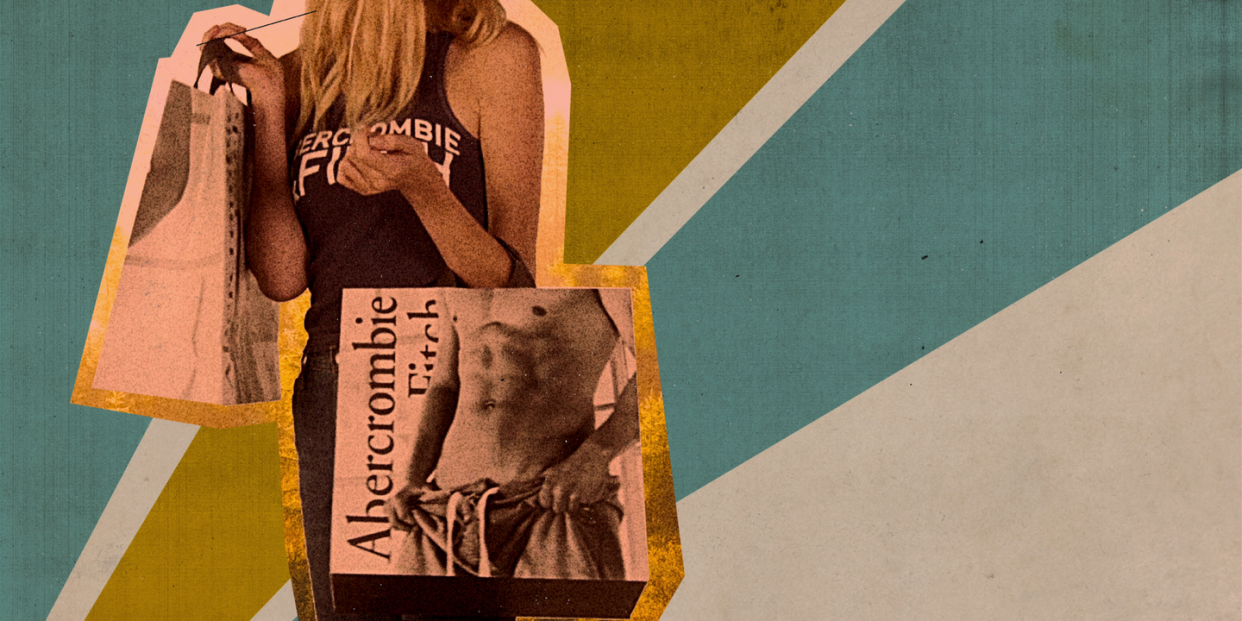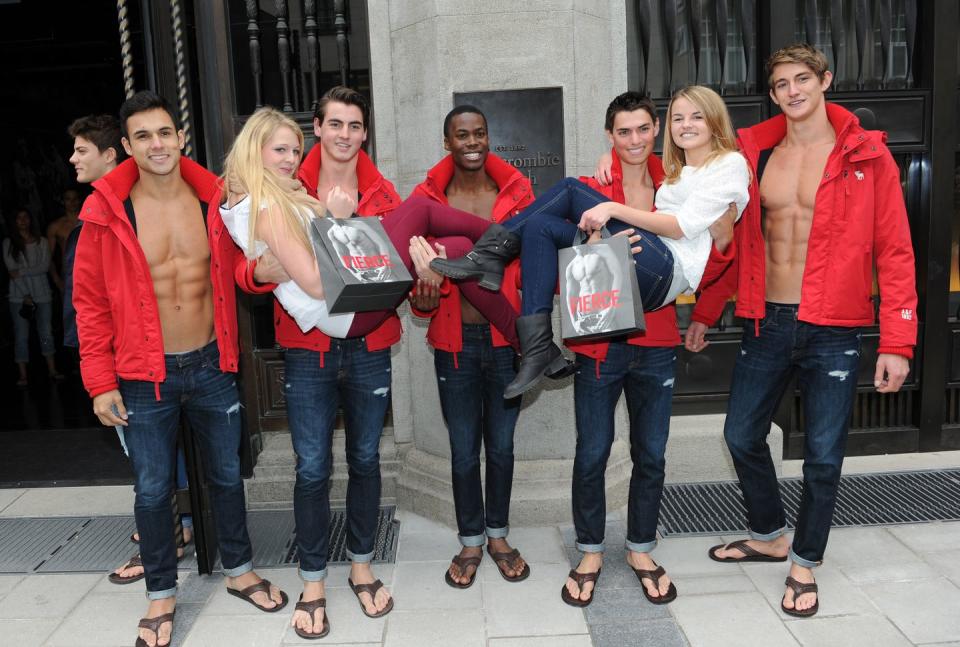The 7 Most Surprising Takeaways From Netflix’s ‘White Hot: The Rise and Fall of Abercrombie & Fitch’

Netflix’s new documentary White Hot: The Rise and Fall of Abercrombie & Fitch may be hilarious when it’s describing a shopping mall as “a search engine you can walk through,” but the ’00s are once again on trial as the Netflix documentary digs deep into the brand that defined “cool kid” for a decade. Ready to cringe about how toxic Abercrombie culture was back in the day, even if you kind of knew it deep down? Fair warning: You’re gonna need an adult beverage to make it through this trip down memory lane.
Some things are not all that surprising. You probably put together back in LFO times that Abercrombie & Fitch’s stores were purposefully dark, loud, and oppressively fragrant. It doesn’t take much convincing to see that their hiring process was racist and the “exclusive” and “all-American” look they perpetuated was overwhelmingly white, cisgender, and thin. It’s even not a shock to learn that staff was told what to wear down to their underwear when you consider that said underwear was probably partially on display. This was a time when bra straps and low waists were the goal.
But the documentary still manages to reveal some things. Here’s what I learned.
Abercrombie photographer Bruce Weber was accused of sexual assault
At least six former male models sued Weber between 2017 and 2018, as reported by the New York Times and the Netflix documentary. (Weber has denied all accusations of wrongdoing and ultimately settled the lawsuits against him from the six male models. The lawsuits did not accuse Abercrombie of wrongdoing.) These kinds of accusations are discussed in the documentary.
There was a magic formula to Abercrombie’s success
Heritage + elitism + sex = exclusivity.
In White Hot, former employees described the way they perceived the brand. According to the documentary, the specifics that define what is and is not the brand are pretty wild too. Anyone who rolled into high school in the ’00s knew the popular kids drove Jeeps…but I’m gonna be thinking about what was “not Abercrombie” about poodles for the rest of the day.

Some staffers said they were instructed to act like you annoyed them
Thank god…I wasn’t just a loser. The stores were engaging in professional negging!
Lacrosse was considered an “unconventional” sport
This isn’t a big reveal—it’s just funny when one of the people interviewed says Abercrombie & Fitch catered to white guys who played unconventional sports like lacrosse…which seems true when you think about it. But also, maybe that’s on me. I grew up putting Abercrombie guys on a pedestal. Even though I wasn’t in their country club world, lacrosse seemed normal enough to me.

So many celebrities used to be A&F models
The documentary cites Olivia Wilde, Penn Badgley, Kellan Lutz, Taylor Swift, Jennifer Lawrence, Channing Tatum, Ashton Kutcher, Heidi Klum, and January Jones, for starters.
Tina Fey made a racist joke about groups protesting A&F’s racism
“Abercrombie and Fitch pulled the line of T-shirts featuring Asian stereotypes because of a protest staged by Asian Americans. The protest was nonviolent and orderly, but the same cannot be said about the parking lot when they all went to drive home.” —“Weekend Update,” April 20, 2002
Part of becoming woke—genuinely woke, not whatever Fox News is calling “woke” these days—is realizing that as a privileged person, racism may have gone right over your head in the past. That’s just something many of us have to recognize and deal with in our lives. So while I remember the backlash surrounding Abercrombie & Fitch’s racist graphic tees, I know I don’t remember Fey making this racist joke on SNL. It is, sadly, a good example of how prevalent microaggressions and casual racism were in the ’00s.
Apparently, Abercrombie rebranded?
I have not stepped inside Abercrombie & Fitch since at least 2010, if not earlier. I grew up. I moved on with my life. I released any hope or desire to be one of the “cool kids” targeted by brands like Abercrombie & Fitch. So it’s news to me that it has since rebranded with a commitment to diversity and inclusion.
In response to Netflix’s documentary, this is what the brand said in a statement:
“In the spirit of transparency, we want to directly acknowledge the news of an upcoming documentary that will feature Abercrombie & Fitch and focus on an era that took place under previous leadership. While the problematic elements of that era have already been subject to wide and valid criticism over the years, we want to be clear that they are actions, behaviors, and decisions that would not be permitted or tolerated at the company now.
“As we’ve evolved, we’ve felt the love from this community. We are grateful for the support you have given us as we’ve taken intentional steps to be inclusive and welcoming to everyone.
“Thank you for giving us the chance to show you who Abercrombie is today and for being a part of who we will be tomorrow. We know the work is never done and remain committed to continually creating a company of which we can all be proud.”
Good luck to them!
You Might Also Like

